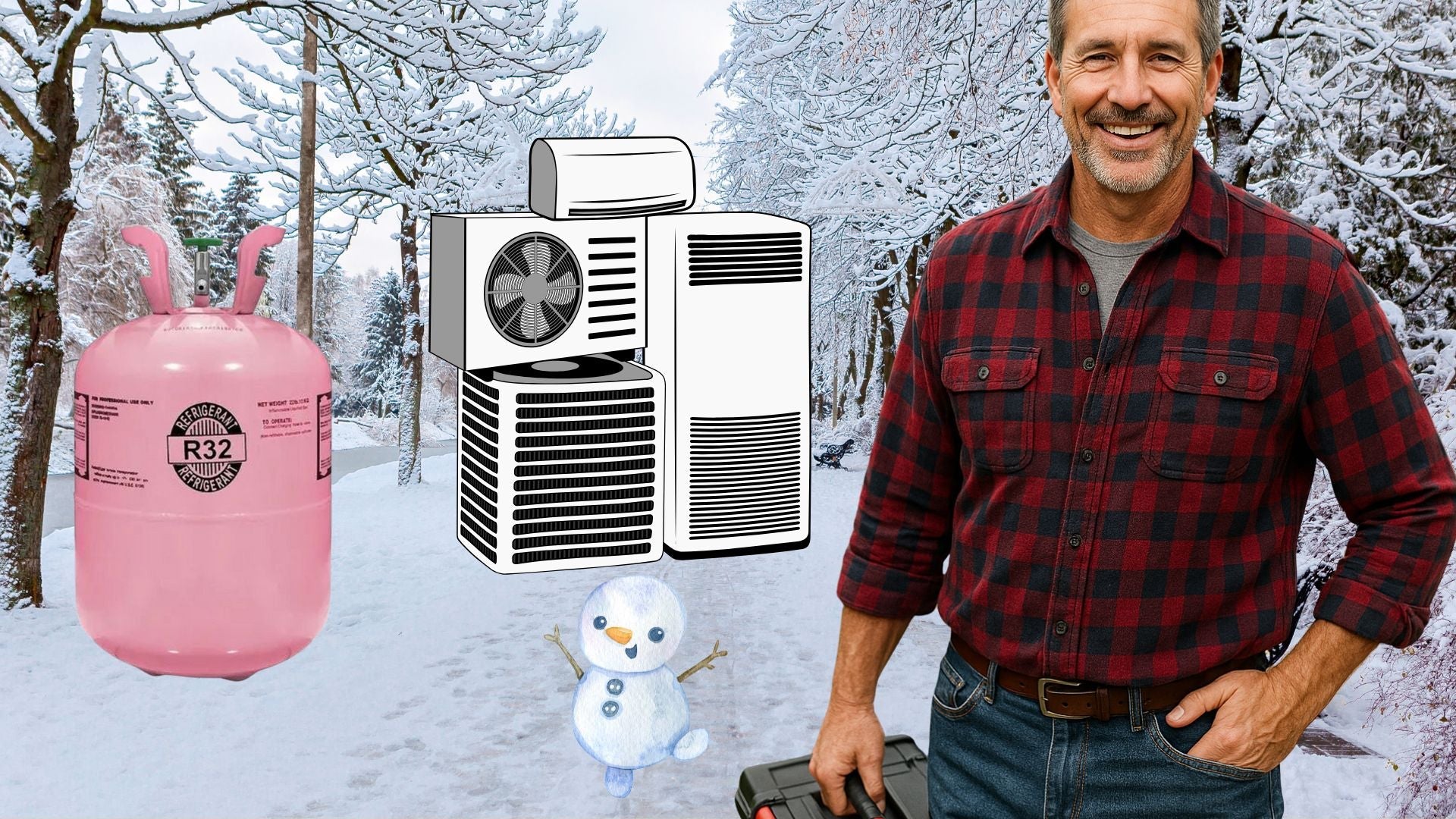R-32 in Cold Climates? Here’s What I’ve Learned Living With It
I live in the Midwest—where one minute it’s sunny, and the next you’re shoveling your driveway in wind that feels like it came from Antarctica. So when I started hearing about R-32 refrigerant being “the future,” I had one big question: how the heck does it hold up in cold climates?
Spoiler alert: better than I expected.
Let’s break it down for anyone out there like me—dealing with frosty winters, drafty basements, and a budget that doesn’t include “just upgrade everything.”
First Things First: Can R-32 Handle the Cold?
Here’s the deal. R-32 is what’s called an A2L refrigerant. That means it’s low global warming potential (GWP), mildly flammable (but chill—it’s safer than it sounds), and has excellent heat transfer capabilities. That last bit is important when it comes to heating performance.
And yes, R-32 refrigerant performs reliably in low ambient temperatures when paired with the right components—like a variable-speed compressor or a dual-fuel setup (like this Goodman 3 Ton 15.2 SEER2 System).
According to Daikin’s research on R-32, they’ve been testing this refrigerant in cold countries like Sweden and Germany since 2012. So it’s not just hype—it’s been proven in real-world frost.
My Winter Experience (AKA Field Testing from My Couch)
The first winter after installing my R-32 system, I was skeptical. I kept expecting it to lag behind my old R-410A setup when temps dipped below 20°F.
Instead, what I got was steady, quiet comfort. No weird cycles. No constant fiddling with the thermostat. Just warm air when I needed it.
The key? I paired the system with a gas furnace as backup. In our house, that’s the kind of dual-fuel system that makes sense—your air conditioner handles most of the work, but the furnace kicks in when it gets polar.
If you live somewhere like Minneapolis, Buffalo, or Denver, that combo is your best bet.
The Tech Side (Don’t Worry, It’s Still Mike Talking)
Here’s why R-32 holds up in cold:
-
Better heat transfer than R-410A (by about 10% to 15%)
-
Lower pressure drops, so the system works less to do the same job
-
More efficient compressor operation even during frosty conditions
Plus, it’s easier to recharge and service, which matters if you like doing your own maintenance or calling in a tech only when absolutely necessary.
Need numbers? Panasonic’s performance data shows systems using R-32 operate at 100% heating capacity down to -5°C (23°F), and still push heat at -15°C (5°F). With a backup furnace, you’re more than covered.
What I’d Recommend If You’re in a Cold Zone
Here’s what I’d tell my buddy who just bought a house in upstate New York:
-
Go with a high-SEER2 system with R-32. It’ll keep you efficient in summer and prepped for winter.
-
Use a gas furnace backup (96% AFUE or better if you can swing it).
-
Insulate your linesets and keep the outdoor unit clear of snow. Seriously—clear the snow.
I run this Goodman R-32 system, and I’ve been impressed—especially for the price point. It’s one of the best ways to ride out the refrigerant switch without shelling out for exotic heat pump tech.
Wrap-Up: Yes, R-32 Can Take the Cold (When Set Up Right)
So if you’re on the fence about R-32 because you live somewhere that requires snow tires and double-pane everything—don’t worry. This refrigerant can absolutely hang in the cold. Just make sure your setup includes a solid furnace and your airflow is dialed in.
As always, don’t get talked into overpriced installs or gimmicky upgrades. Do your homework. Look at the specs. And if you're curious, check out the full line of R-32 AC and Gas Furnace systems.
My Next article is on: R-32 vs. R-410A: Why Smart Homeowners Are Making the Switch to Better AC Systems
Stay warm,
Mike







